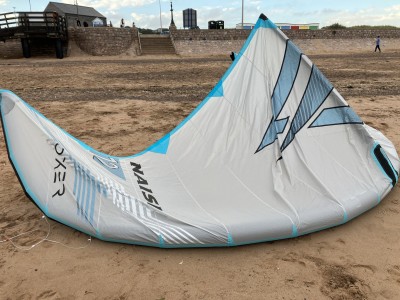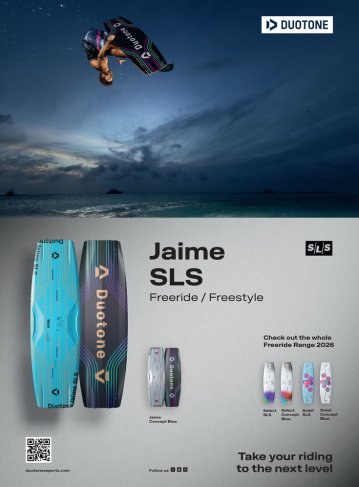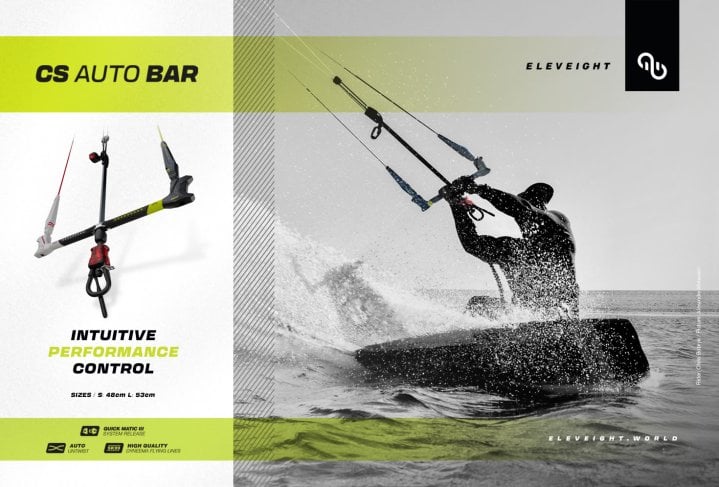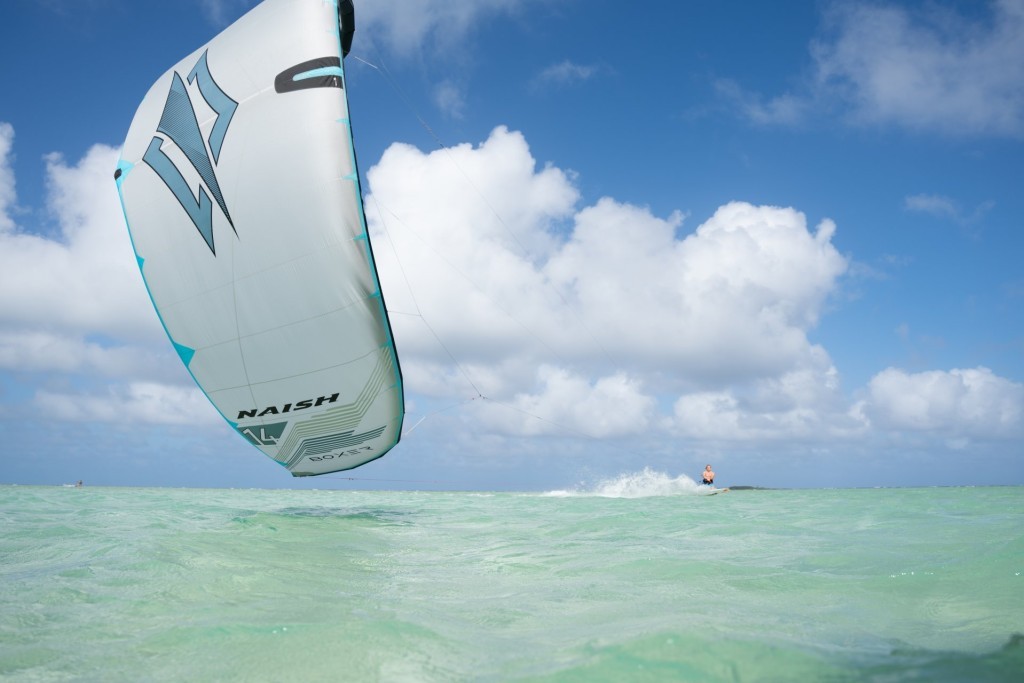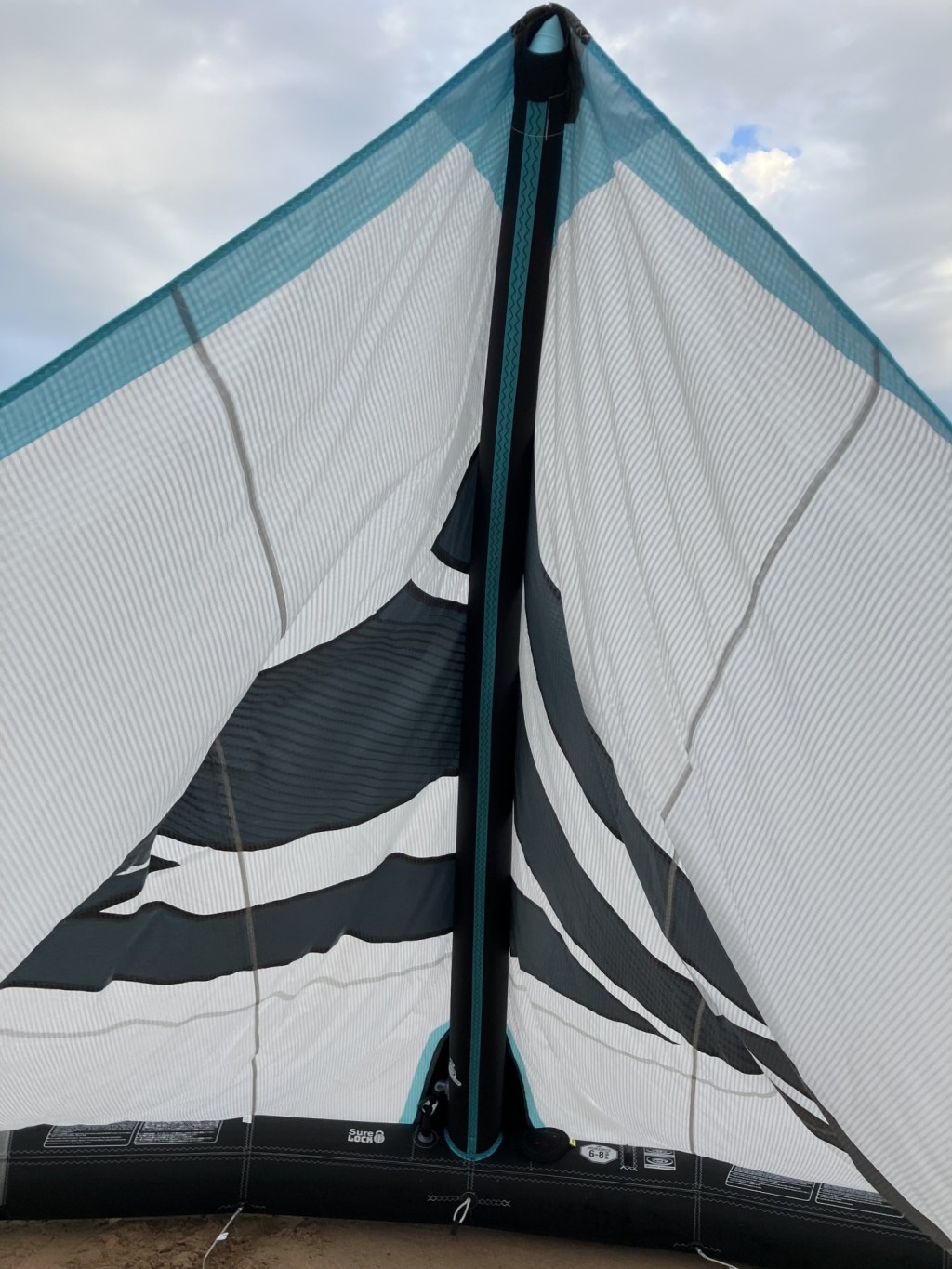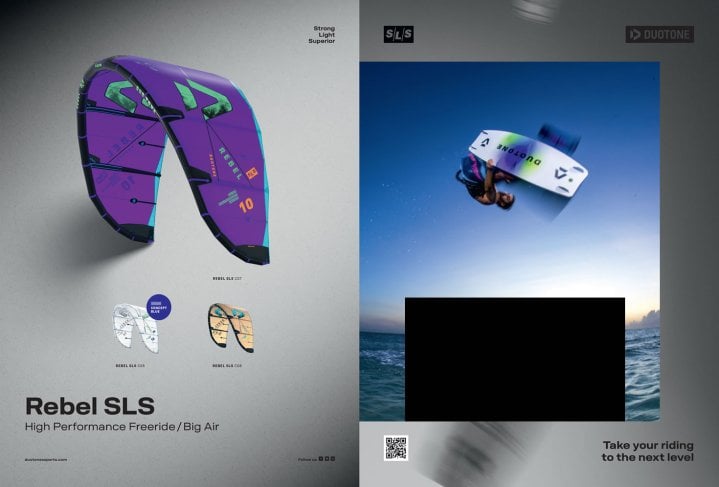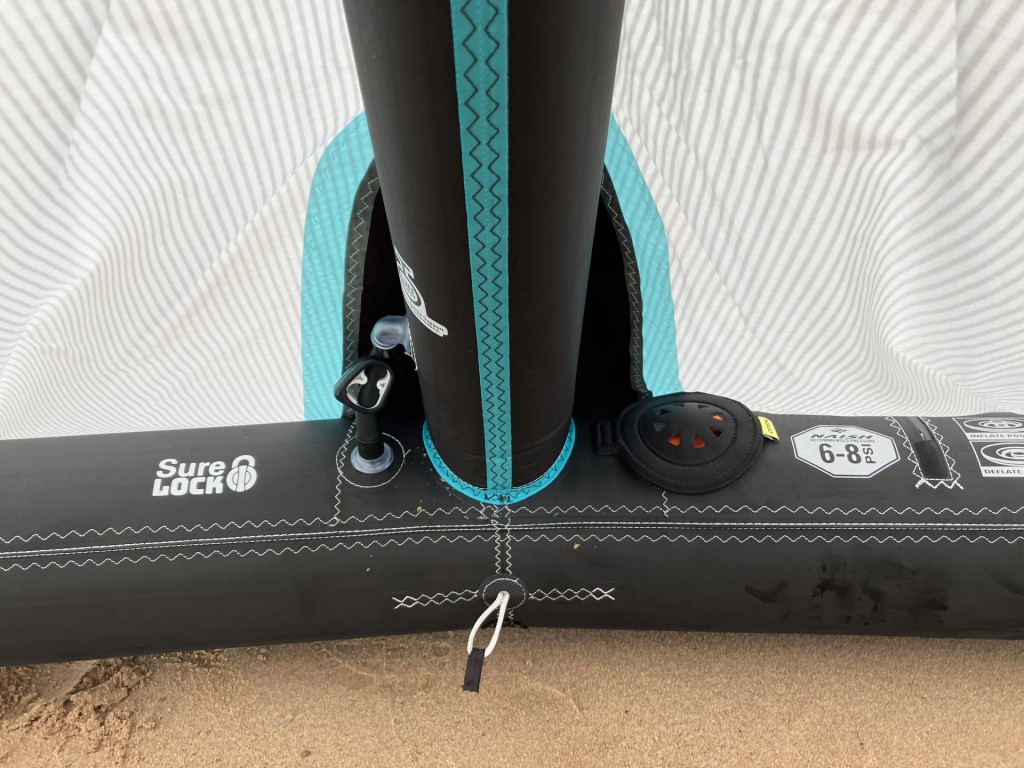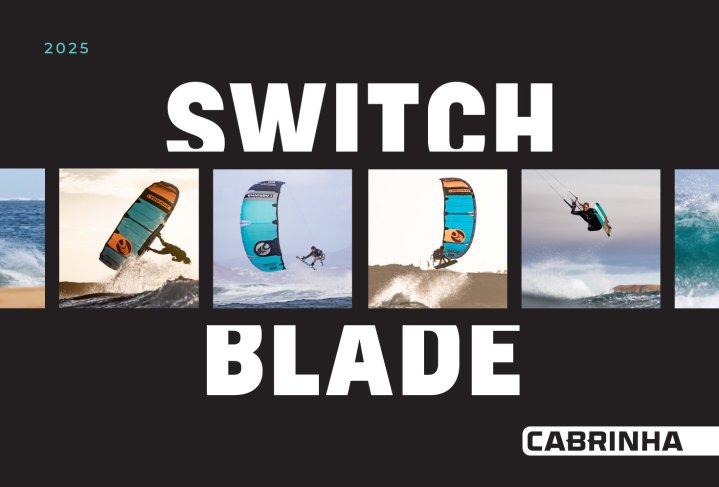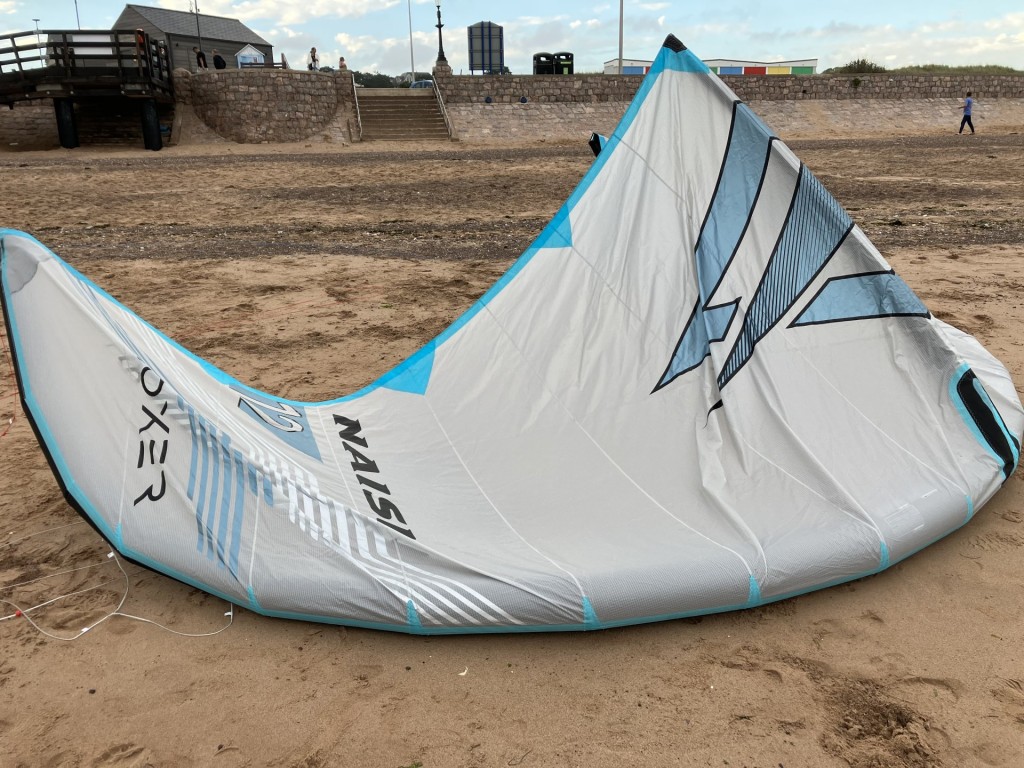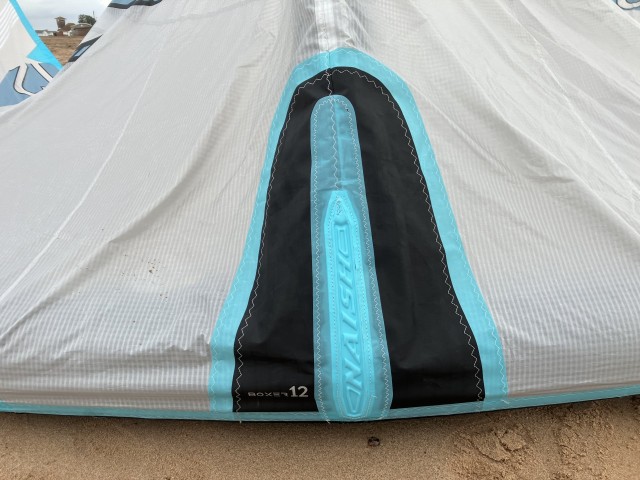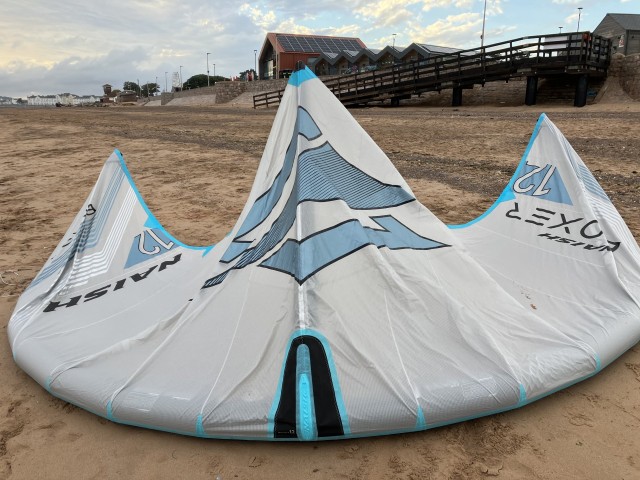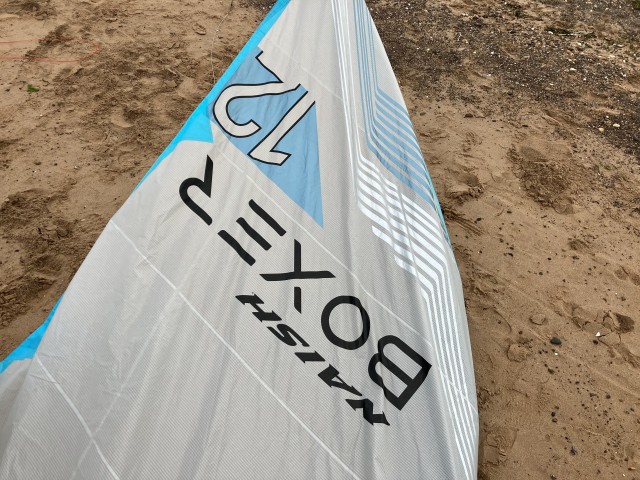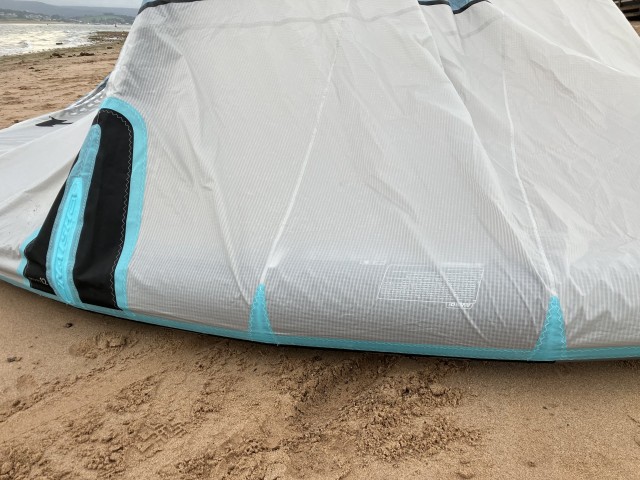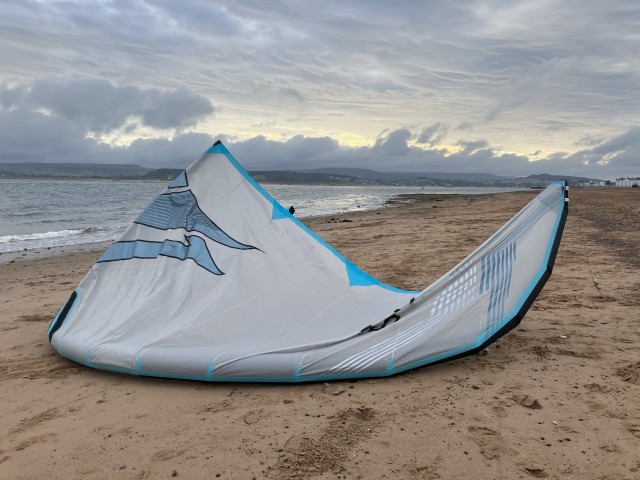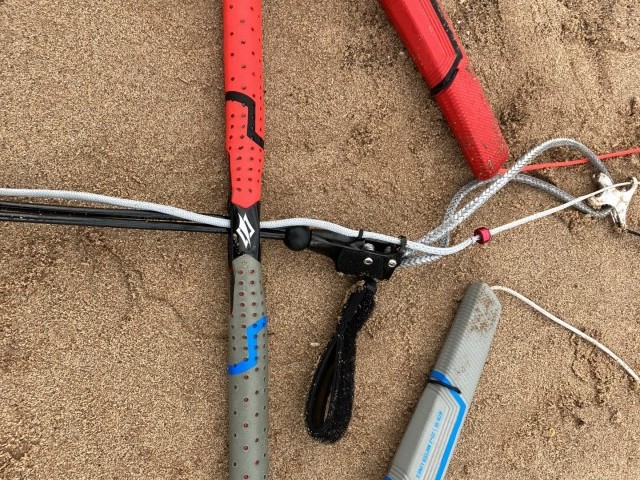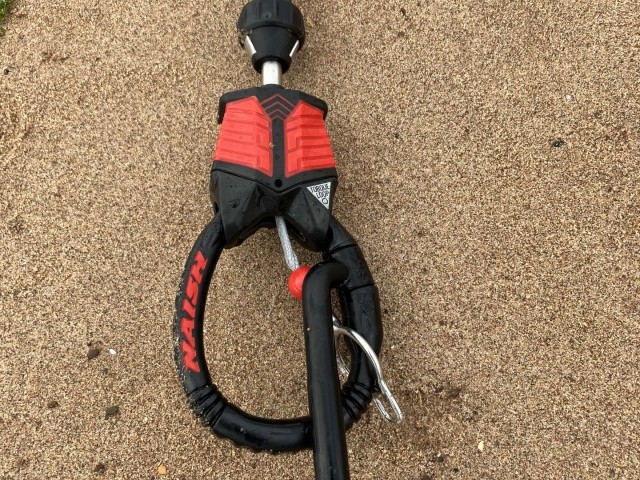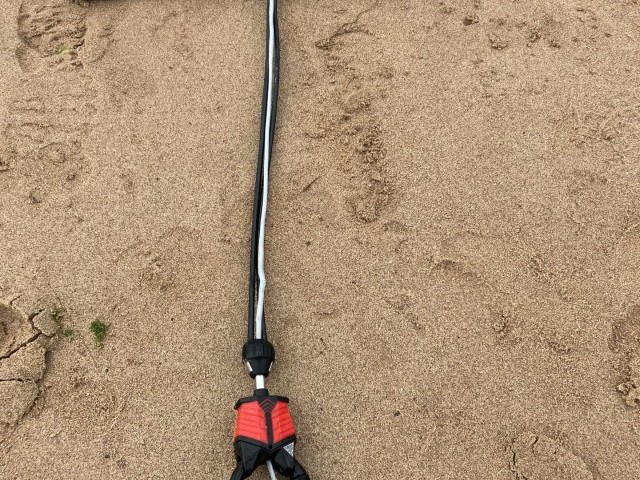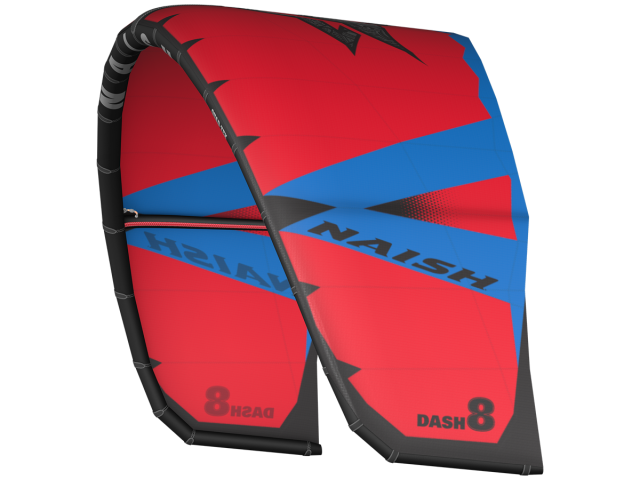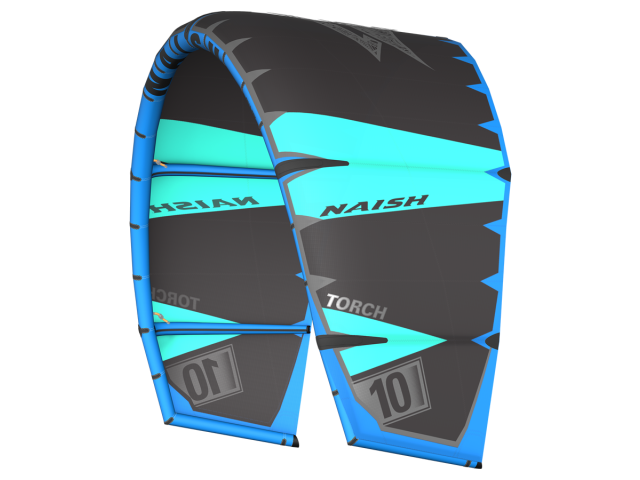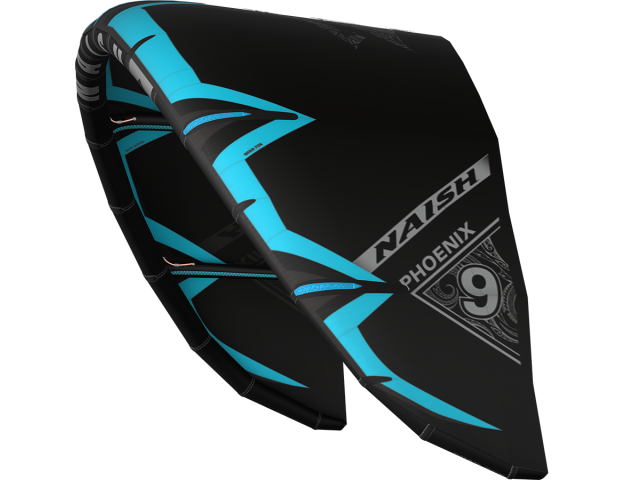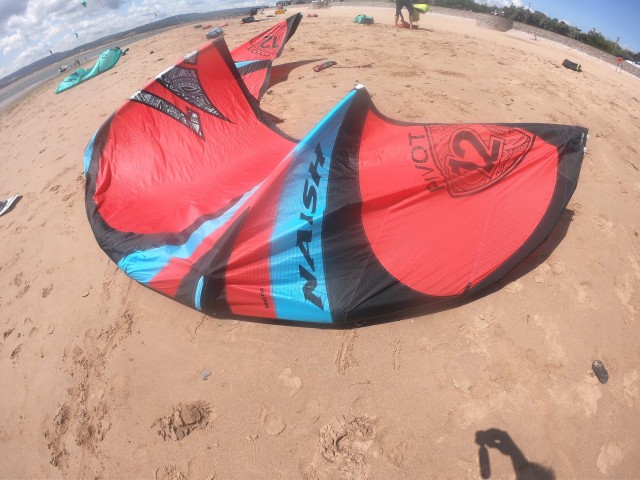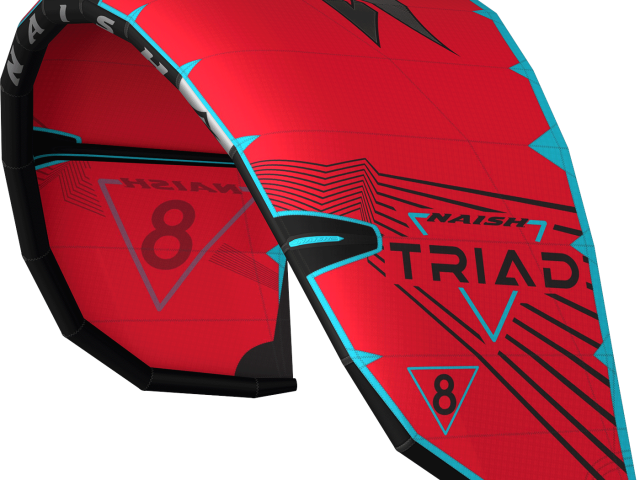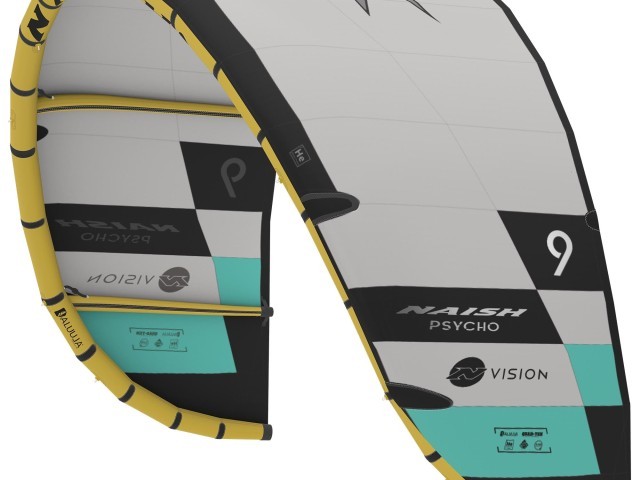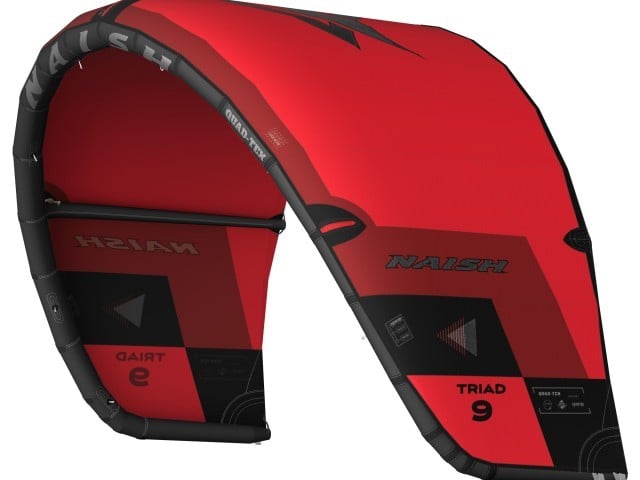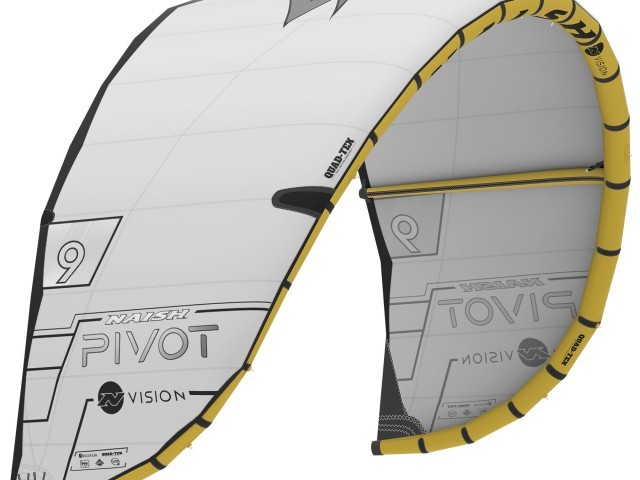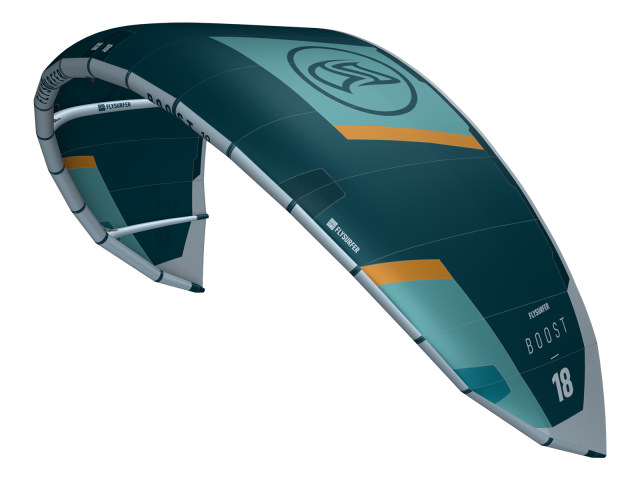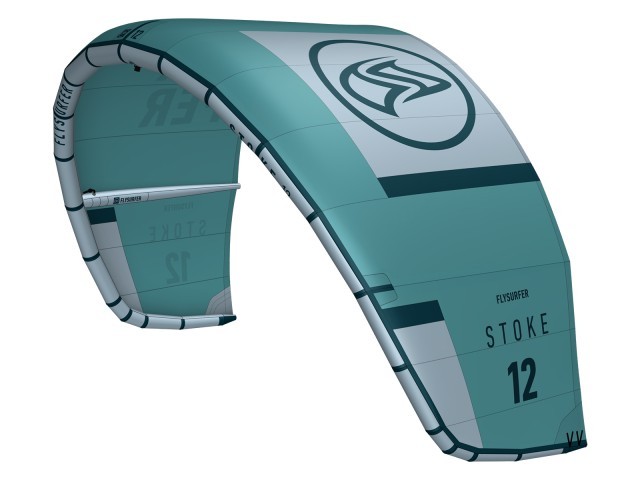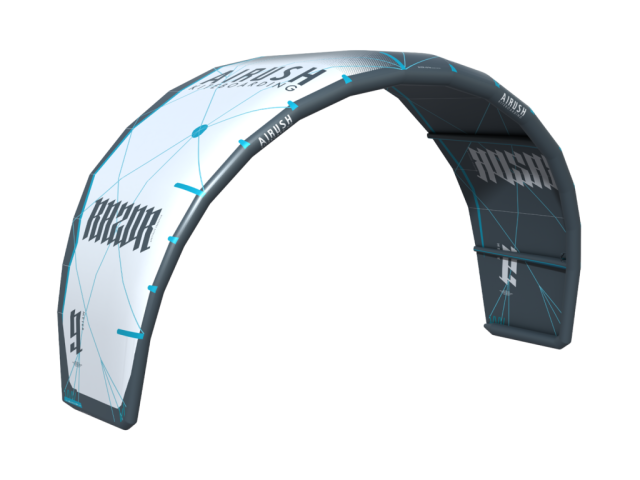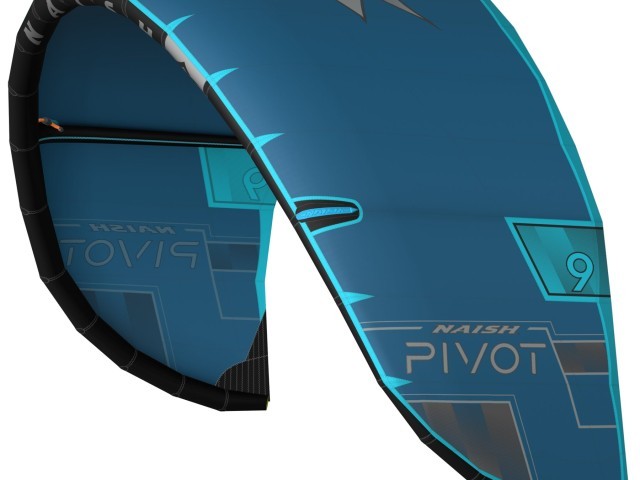At A Glance
The Naish Boxer has been a light wind and foiling favourite here at IKSURFMAG for some time, but it's been a couple of years since we've had our hands on one. You can definitely tell that the kite has been tweaked! Unsurprisingly, many of the changes that Naish has implemented are part of an ongoing mission to reduce the weight of the Boxer as much as possible. As a kite optimised for foiling and lighter wind free-riding, it is positioned to greatly benefit from any possible weight savings.
The most obvious of the many weight-saving measures are the new 'Swift Tips.' Instead of a traditional Dacron wing tip, the Boxer's canopy material extends right to the end of the wingtip. To replicate the increased stiffness of Dacron, there are multiple staggered, overlapping plies of quad-tex canopy material where the Dacron would have been. Naish is promising both reduced weight and increased wingtip stiffness, resulting in a more immediate turning response and direct connection feeling through the bar.
A similar construction detail is used to stiffen the trailing edge of the Boxer to reduce flutter and maintain a clean aerodynamic profile. The entire trailing edge has the typical thin strip of doubled-up canopy material to maintain leech tension, but it also has additional 'flutter dispersing triangles' instead of traditional battens. These are triangle-shaped reinforcements of an additional ply of quad-tex at the trailing edge on the canopy seam lines. This should serve the same purpose as a traditional batten: to reduce flutter, increase canopy stiffness overall, and improve the lifetime durability of the kite, but it will do so at a significantly reduced weight cost compared to battens.
The Boxer benefits from Naish's HT Plus Seam on the leading edge of the kite. The leading edge seam uses a high-tenacity thread, which strengthens the seam to allow high inflation pressures. This feature is particularly beneficial on low strut count kites, which benefit from the increased loadframe stiffness from the increased leading edge pressure.
Sizes: 2.8m, 3.4m, 4m, 5m, 6m, 7m, 8m, 9m, 10m, 11m, 12m, 14m, 16m
In The Air
The Boxer became my go-to light wind foil kite while I had it on loan for testing, so it saw a selection of conditions. However, the first session was the lightest wind of all and the session that left the biggest impression on me. The Boxer doesn't fly too far forward to the edge of the wind window, whether it is right up at 12 or lower nearer the water. Thanks to this, there is very little forward and backward movement in response to wind changes, which are often very noticeable in sub-10 knots! The kite is so stable and planted and waits patiently in the sky even in very shifty light wind conditions. It inspires confidence from the get-go. You don't get that feeling that you have to keep it moving or have to keep pulling on a steering line to keep it in the air once you've let it fly closer to the ground.
The weight savings have definitely paid off, and I would not have guessed that I was flying a 12m kite in such light winds as the kite remained responsive and happy to climb even if I'd let it come a little low while body dragging out away from the shore to find depth to foil, for example.
Once up and riding and loading the foil to give the Boxer a healthy line load, you notice how solid the kite feels for a one-strut kite. There is very little flutter, even with the bar out, which is impressive given the significant bar-throw depower available. The same was true during windier sessions on a twintip. The Boxer turns instantly in response to steering inputs, and the actual turning speed is about on par for a single strut kite of its size. The turning arc isn't completely pivotal, and I really appreciated this as it generated power nicely while looping to get going in light winds and felt lively when steering the kite hard to gybe aggressively.
The kite feels super rigid when riding for a single-strut and continues to do so when you jump. It has impressive hangtime and retains a good bar feel whilst in the air with no delay when you redirect. It provides good feedback to steering input, even mid-jump, and provides soft landings with ease.
Thanks to the Boxer not flying too far forward to the edge of the wind window, it drifts well and maintains its angle to the wind as it does so. It doesn't begin to fall to the water vertically quickly when it has no line tension, presumably thanks to its weight shedding, and it feels composed when you re-engage line tension and ride off.
I didn't have any wave conditions to try it in (for which the 12m is probably also pushing it!), but I can see why Naish markets the Boxer in the 9m-11m sizes so heavily for light wind wave riding as the drift is very impressive and predictable. This predictable nature had me trying round the worlds on the foil, which was not only impressive for a 12m but inevitably led to me crashing the kite for a relaunch test. Without wasting words, the re-launch in very light winds was painless with a single steering line pull methodology. It seemed as though the reduced weight of the Swift Tips really helped here, as it released from the water very quickly once it was up onto its tip.
Overall
The Boxer is a lightweight, reactive kite that is incredibly stable, reassuringly solid for a one-strut platform and has plenty of depower. It'll jump confidently and easily handles some heavy line tension when the wind picks up, unlike the one-strut kites of old.
There is no doubt that the Boxer ticks all of the boxes when it comes to a foiling and light-wind freeride machine, but it does that and some. I'd definitely take it as a lighter breeze wave option, and I'd recommend it as an excellent choice for beginner/intermediate riders wanting a kite that is super forgiving to fly through a big wind range.
Videos
This review was in Issue 101 of IKSURFMAG.
For more information visit Naish KiteboardingRelated
By Liam Proctor


